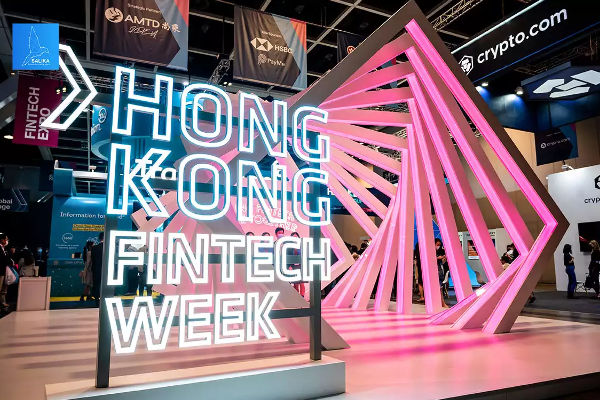Traditional institutions embrace the crypto industry timeline and full map

Since 2020, major US banks, asset managers, and payment institutions have gradually shifted from cautious observation of cryptocurrencies to active investment, cooperation, or launch of related products.
As of early 2025, institutional investors hold about 15% of the Bitcoin supply, and nearly half of hedge funds have begun to allocate digital assets.
Key trends driving this integration include: the launch of regulated crypto investment tools (such as the listing of the first US spot Bitcoin and Ethereum ETFs in January 2024), the rise of tokenization of real assets (RWA) on the blockchain, and the increasing use of stablecoins by institutions in settlement and liquidity management.
Institutions generally view blockchain networks as an effective tool to simplify traditional back-office systems, reduce costs, and enter new markets.
Many banks and asset managers are piloting permissioned decentralized finance (DeFi) platforms that combine the efficiency of smart contracts with KYC (know your customer) and AML (anti-money laundering) compliance.
At the same time, they are also exploring permissionless public DeFi in a controlled manner. The strategic logic is clear: DeFi's automated and transparent protocols enable faster settlements, 24/7 market operations, and new revenue opportunities, thereby solving the long-standing inefficiencies of traditional finance (TradFi).
However, there are still significant obstacles to this process, including regulatory uncertainty in the United States, technical integration challenges, and market volatility, which have inhibited the speed of adoption.
Overall, as of March 2025, the interaction between traditional finance and the crypto field has shown a cautious but gradually accelerating trend. Traditional finance is no longer just a bystander in the crypto field, but has begun to cautiously engage in some use cases with tangible advantages (such as digital asset custody, on-chain lending, and tokenized bonds). The next few years will be a critical period to determine whether TradFi and DeFi can be deeply integrated in the global financial system.
Paradigm Report - "The Future of Traditional Finance" (March 2025)
As a leading crypto venture capital fund, Paradigm surveyed 300 traditional finance (TradFi) practitioners from multiple developed economies in its latest report. Here are some of the most interesting statistics and insights from the report.
Which areas contribute most to the cost of providing financial services?
What cost-cutting strategies does your organization use when providing financial services?
About 76% of companies are currently involved in cryptocurrencies.
About 66% of traditional financial companies are engaging with decentralized finance (DeFi).
About 86% of companies are currently involved in blockchain and distributed ledger technology (DLT).
Timeline of institutional entry into the crypto space (2020-2024)
2020 - Initial exploration:
Banks and traditional financial institutions began to tentatively enter the crypto market. In mid-2020, the U.S. Office of the Comptroller of the Currency (OCC) made it clear that banks can custody crypto assets, opening the door for custodians like BNY Mellon.
BNY Mellon subsequently announced in 2021 that it would provide digital asset custody services. In the same year, corporate treasuries also began to get involved in the crypto space: MicroStrategy and Square made high-profile Bitcoin purchases as reserve assets, which marked the growth of institutional confidence.
Payment giants are also taking action - PayPal launched a cryptocurrency buying and selling service for US customers in late 2020, bringing digital assets to millions of users. These moves signal that mainstream institutions are beginning to view cryptocurrencies as a legitimate asset class.
2021 - Rapid Expansion:
With the bull market in full swing, 2021 has seen an acceleration in the integration of traditional finance and the crypto space. Milestones such as Tesla's purchase of $1.5 billion in Bitcoin and Coinbase's listing on the Nasdaq in April 2021 have become an important bridge between Wall Street and the crypto space.
Investment banks are also responding to customer demand: Goldman Sachs has restarted its crypto trading desk, and Morgan Stanley has begun offering access to a Bitcoin fund to wealthy clients. In October of the same year, the first US Bitcoin futures ETF (ProShares BITO) was officially launched, providing institutions with a regulated crypto investment tool.
Major asset managers such as Fidelity and BlackRock have also begun to set up dedicated digital asset departments. In addition, Visa and Mastercard have established partnerships with stablecoins (such as Visa's USDC pilot project), demonstrating their confidence in crypto payment networks.
The report clearly depicts the path of how traditional finance has gone from initial exploration to rapid expansion, laying the foundation for the further integration of crypto and traditional finance in the next few years.
2022 - Bear Market and Infrastructure Construction:
Despite the crypto market downturn in 2022 (marked by events such as the Terra crash and FTX bankruptcy), institutions continue to build infrastructure. In August of that year, BlackRock, the world's largest asset management company, partnered with Coinbase to provide crypto trading services to institutional clients and launched a private Bitcoin trust for investors, a move that released strong market confidence.
Traditional exchanges and custodians are also expanding digital asset services. For example, BNY Mellon launched crypto asset custody services for some clients, while Nasdaq developed a custody platform. At the same time, JPMorgan used blockchain for interbank transactions through its Onyx division, and JPM Coin processed hundreds of billions of dollars in transactions in wholesale payments.
Tokenization pilot projects are also gradually emerging: JPMorgan and other institutions used public blockchains to simulate DeFi transactions of tokenized bonds and foreign exchange in the "Project Guardian" project.
However, U.S. regulators took a stricter approach to market turmoil, which led some companies (such as Nasdaq at the end of 2023) to pause or slow down the launch of crypto products, waiting for clearer rules.
2023 - Rekindled institutional interest:
2023 ushered in a cautious recovery of institutional interest. In the middle of the year, BlackRock submitted an application for a spot Bitcoin ETF, followed by Fidelity, Invesco and other companies. This wave of applications was an important turning point, especially considering the previous rejections of similar proposals by the U.S. Securities and Exchange Commission (SEC). In the same year, the crypto infrastructure supported by traditional finance began to go online: EDXMarkets, a digital asset exchange backed by Charles Schwab, Fidelity and Citadel, officially operated in 2023, providing institutions with a compliant trading platform.
At the same time, the tokenization wave of traditional assets accelerated - for example, private equity giant KKR tokenized part of its funds on the Avalanche blockchain, and Franklin Templeton migrated its tokenized money market fund holding U.S. Treasuries to a public blockchain.
The international regulatory environment has also improved (EU passes Markets in Crypto-Assets Act (MiCA), Hong Kong reopens crypto trading under new rules), further pushing US institutions to prepare for a global competitive landscape.
By the end of 2023, Ethereum futures ETFs are approved, and the market is looking forward to the approval of spot ETFs. At the end of the year, institutional adoption of crypto assets is showing a trend that will accelerate if regulatory barriers are cleared.
Early 2024 - Spot ETF Approval:
In January 2024, the US Securities and Exchange Commission (SEC) finally approved the first US spot Bitcoin ETFs (followed by Ethereum ETFs). This milestone event marked the mainstreaming of crypto assets on US exchanges and unlocked billions of dollars for pension funds, registered investment advisors (RIAs), and conservative portfolios that were previously unable to hold crypto assets.
Within a few weeks, crypto ETFs attracted a large amount of capital inflows, significantly expanding the scope of investor participation. This period continued to expand institutional crypto products - from stablecoin initiatives (such as PayPal's PYUSD stablecoin) to banks (such as Deutsche Bank and Standard Chartered Bank) investing in digital asset custody startups. As of March 2025, almost every major U.S. bank, brokerage firm, and asset manager has launched crypto-related products or formed strategic partnerships in the crypto ecosystem, reflecting the full-scale entry of institutions into the crypto space since 2020.
Traditional Finance's View on DeFi in 2023-2025
Traditional Finance (TradFi) is both curious and cautious about decentralized finance (DeFi).
On the one hand, many institutions recognize the innovative potential of permissionless DeFi - public liquidity pools and automated markets continue to perform well in crises (for example, decentralized exchanges continue to operate smoothly even in the market turmoil in 2022). In fact, industry surveys show that most TradFi practitioners foresee that public blockchain networks will gradually become an important part of their business in the future.
On the other hand, compliance and risk management concerns make most institutions prefer "permissioned DeFi" environments in the short term. These platforms are usually private or semi-private blockchains that retain the efficiency advantages of DeFi while limiting participants to audited entities.
A typical case is JPMorgan Chase's Onyx network, which runs a proprietary stablecoin (JPM Coin) and payment channels to serve institutional clients - essentially a "walled garden" version of DeFi. Similarly, Aave Arc launched a permissioned liquidity pool in 2023, with all participants required to undergo KYC certification by whitelisted auditor Fireblocks, combining DeFi technology with the compliance requirements of TradFi.
This dual-track perspective - embracing automation and transparency while exerting control over participants - has become a key feature of traditional finance's exploration of DeFi before 2025.
Institutional DeFi pilot projects
Between 2023 and 2025, several well-known institutions explored the potential of decentralized finance (DeFi) through a series of high-profile pilot projects. JPMorgan's Onyx platform, in collaboration with other banks and regulators, participated in the "Guardian" project led by the Monetary Authority of Singapore (MAS), completing tokenized bond transactions and foreign exchange swaps on a public blockchain, achieving instant atomic settlement through smart contracts.
These experiments show that even permissionless protocols (such as Aave and Uniswap, after KYC compliance modifications) can be used by regulated entities with appropriate security measures. Asset management giant BlackRock has launched the BlackRock USD Digital Liquidity Fund (BUIDL) to tokenize a U.S. Treasury money market fund by the end of 2023.
Distributed to qualified investors through the Securitize platform, BUIDL provides institutions with a compliant way to hold tokenized yield assets on the Ethereum network, indicating that traditional finance's acceptance of public blockchains is increasing under the premise that intermediaries ensure compliance.
Other examples include Goldman Sachs' Digital Asset Platform (DAP), which issued tokenized bonds and facilitated digital repo transactions, and HSBC's use of the Finality blockchain platform for foreign exchange settlement.
These initiatives reflect a "learn by doing" strategy - large institutions evaluate the potential advantages of DeFi technology in speed and efficiency through limited-scope trials of core activities such as payments, lending and trading.
VC-backed infrastructure construction
A strong crypto infrastructure ecosystem is emerging, with venture capital and traditional financial institutions often backing the effort to bridge traditional finance (TradFi) with DeFi. Custody and security service providers such as Fireblocks, Anchorage, and Copper have raised significant funding to develop “institutional-grade” platforms for storing and trading digital assets (including tools for securely accessing DeFi protocols).
Compliance technology companies such as Chainalysis and TRM Labs provide transaction monitoring and analysis, enabling banks to meet anti-money laundering (AML) requirements when interacting with public blockchains. In addition, brokers and fintech startups are simplifying the complexity of DeFi and providing institutions with user-friendly interfaces.
For example, crypto prime brokers can now offer access to yield farming or liquidity pools as a service, while handling the technical operations off-chain. This venture-driven construction of wallets, APIs, identity solutions, and risk management layers is gradually addressing the operational barriers for traditional finance to enter DeFi, paving the way for deeper integration in the future.
By 2025, decentralized exchanges (DEX) and lending platforms have begun to integrate institutional portals to ensure that counterparties are verified.
Overall, the view of traditional finance (TradFi) on DeFi has changed profoundly: DeFi is no longer seen as a "Wild West" that needs to be avoided, but a collection of financial innovations that can be carefully utilized within a compliance framework. Large banks are becoming early adopters of DeFi in a controlled manner, recognizing that ignoring the growth of DeFi may mean falling behind in the next financial revolution.
The regulatory environment in the United States and global comparison
In the crypto field, the regulatory clarity in the United States has always lagged behind the pace of technological innovation, which has created both friction and opportunities for traditional finance to enter the crypto field. The U.S. Securities and Exchange Commission (SEC) has taken a tough stance: in 2023, the SEC filed several high-profile lawsuits against major exchanges, accusing them of offering unregistered securities, and proposed rules that could classify many DeFi platforms as securities exchanges. This regulatory environment has led U.S. institutions to be more cautious when participating in DeFi because most DeFi tokens lack a clear legal status.
However, in late 2024 and early 2025, the regulatory environment underwent an important shift. Under pressure from all sides, the SEC approved a spot crypto ETF, marking a pragmatic shift in its attitude. At the same time, court decisions such as the Grayscale case in 2024 began to clarify the scope of the SEC's regulatory authority. The Commodity Futures Trading Commission (CFTC) is also playing a role, and its position on treating Bitcoin and Ethereum as commodities remains clear. Despite this, the CFTC punished some DeFi protocol operators for non-compliance in 2023, while also advocating for a clearer framework to support innovation.
At the same time, the U.S. Treasury Department has set its sights on DeFi from an anti-money laundering (AML) perspective. In 2023, the Treasury Department's DeFi Illegal Financial Risk Assessment Report pointed out that the anonymity of DeFi could be exploited by criminals, which laid the groundwork for the possible imposition of KYC (know your customer) obligations on decentralized platforms in the future. Actions similar to the 2022 sanctions on Tornado Cash show that even code-based services cannot escape legal scrutiny if they are related to illegal capital flows.
For banks, U.S. banking regulators (OCC, Federal Reserve, FDIC) have issued guidance restricting direct exposure to crypto assets, effectively directing institutional participation to regulated custody services and ETFs rather than direct use of DeFi protocols. As of March 2025, the U.S. Congress has not passed comprehensive cryptocurrency legislation, but several proposals (such as stablecoin regulation and clarification of the definition of securities and commodities) have entered the advanced discussion stage. This means that traditional financial institutions in the United States need to be extremely cautious when participating in DeFi: they usually limit DeFi activities to sandbox trials or offshore subsidiaries, waiting for clearer regulatory guidance. In particular, clarity in the field of stablecoins (which may be designated as a new payment instrument by federal law) and custody rules (such as the SEC's custody proposal) will have a significant impact on the depth of institutional participation in DeFi protocols within the United States.
Europe: MiCA and forward-looking rules
In sharp contrast to the United States, the European Union has passed a comprehensive crypto regulatory framework - the Markets in Crypto-Assets Act (MiCA). MiCA provides clear rules for crypto asset issuance, stablecoins, and the operation of service providers in each member state as of 2024. Combined with a pilot program for tokenized securities trading, MiCA provides certainty for innovation for European banks and asset managers. By early 2025, European businesses have clarity on how to apply for an operating license for a crypto exchange or wallet service, while guidelines for institutional stablecoins and even DeFi are in the works. This relatively clear regulatory environment has driven pilot projects for tokenized bonds and on-chain funds by traditional European financial institutions.
For example, several EU commercial banks have issued digital bonds through regulatory sandbox programs and legally processed tokenized deposits under regulatory supervision. The UK has taken a similar path, with a clear desire to become a "crypto hub." As of 2025, the UK Financial Conduct Authority (FCA) is developing rules for crypto trading and stablecoins, while the UK Law Commission has included crypto assets and smart contracts in legal definitions. These moves may enable London-based institutions to launch DeFi-based services earlier than their US counterparts (within certain limits).
Asia: Regulatory balance and innovation drive
Singapore and Hong Kong provide a stark contrast to global regulation. The Monetary Authority of Singapore (MAS) has implemented a strict licensing system for crypto companies since 2019, but has also actively explored DeFi innovations through public-private partnerships.
For example, DBS, a major bank in Singapore, launched a regulated crypto trading platform and participated in DeFi transactions (such as tokenized bond transactions completed in cooperation with JPMorgan Chase). Singapore's approach regards permissioned DeFi as a controllable area of exploration, reflecting the concept of developing reasonable rules through regulated experiments.
After years of restrictions, Hong Kong changed its policy direction in 2023 and launched a new framework to license virtual asset exchanges and allow retail crypto trading under supervision. This policy shift was supported by the government, attracted global crypto companies, and encouraged banks in Hong Kong to consider providing digital asset services in a regulated environment.
In addition, Switzerland has promoted the development of tokenized securities through the Distributed Ledger Technology Act (DLT Act), while the UAE has developed dedicated crypto rules through the Dubai Virtual Asset Regulatory Authority (VARA). These examples further demonstrate that regulatory attitudes vary from cautious acceptance to active promotion around the world, demonstrating the diversity and potential of crypto-finance development.
Impact and differences in DeFi participation
For U.S. financial institutions, due to the fragmentation of regulatory rules, most direct participation in DeFi remains limited until compliant solutions emerge. Currently, U.S. banks are more focused on consortium blockchains or trading tokenized assets that meet existing legal definitions. In contrast, in jurisdictions with clearer regulatory frameworks, institutions are more relaxed about interacting with similar DeFi platforms.
For example, European asset managers may provide liquidity to a licensed lending pool, while Asian banks may use decentralized trading protocols internally for foreign exchange swaps while ensuring that regulators are informed. However, the lack of unified rules around the world also poses challenges: a multinational institution needs to find a balance between strict rules in one region and opportunities in another. Many have called for the development of international standards or "safe harbor" policies specifically for decentralized finance to unlock the potential of DeFi (such as efficiency and transparency) without compromising financial integrity.
In summary, regulation remains the biggest determinant of the speed at which traditional finance (TradFi) participates in DeFi. As of March 2025, although some progress has been made - such as the approval of spot crypto ETFs in the United States and the issuance of customized licenses by global regulators - more work is still needed to establish sufficient legal clarity to enable institutions to fully embrace permissionless DeFi at scale.
Key DeFi protocols and infrastructure: a bridge to traditional finance
Many leading DeFi protocols and infrastructure projects are directly addressing the needs of traditional finance and creating entry points for institutional use:
Aave Arc (Institutionalized Lending Market)
Aave Arc is a licensed version of the popular Aave liquidity protocol, launched between 2022 and 2023, designed for institutional users. It provides a private lending pool that only allows participants who have passed whitelist authentication and completed KYC (know your customer) verification to conduct lending operations on digital assets. By introducing anti-money laundering (AML) and KYC compliance mechanisms (powered by whitelist agents such as Fireblocks) and accepting only pre-approved collateral, Aave Arc solves the key needs of traditional financial institutions (TradFi) - trust in counterparties and regulatory compliance. At the same time, it retains the lending efficiency driven by DeFi smart contracts. This design enables banks and fintech lenders to use DeFi's liquidity to obtain secured loans without being exposed to the anonymity risks of public liquidity pools.
Maple Finance (On-chain Capital Markets)
Maple is an institutionalized low-collateralized loan market on the chain, which can be compared to the syndicated loan market on the blockchain. Through Maple, certified institutional borrowers (such as trading companies or medium-sized enterprises) can obtain liquidity from lenders worldwide, and the transaction terms are due diligenced and facilitated by "Pool Delegates". This model fills a gap in traditional finance: low-collateralized loans usually rely on relationship networks and lack transparency, while Maple brings transparency and 24-hour settlement functions to such loans. Since its launch in 2021, Maple has facilitated hundreds of millions of dollars in loans, demonstrating how creditworthy businesses can raise funds more efficiently on-chain. For traditional financial lenders, the Maple platform provides a way to earn stablecoin returns by lending to vetted borrowers, effectively simulating the private debt market while reducing operating costs. Maple shows how DeFi can significantly reduce administrative costs by simplifying loan issuance and servicing (such as interest payments) through smart contracts. This innovation provides traditional financial institutions with an efficient and compliant on-chain capital market solution.
Centrifuge (Real Asset Tokenization)
Centrifuge is a decentralized platform focused on bringing real assets (RWAs) into DeFi as collateral. It allows asset originators (such as lenders in trade finance, accounts receivable factoring, or real estate) to tokenize assets such as invoices or loan portfolios into fungible ERC-20 tokens. These tokens can then be financed through DeFi liquidity pools (Centrifuge's Tinlake platform). This mechanism effectively connects traditional financial assets with DeFi liquidity - for example, invoices from small businesses can be pooled and backed by stablecoin lenders around the world. For institutions, Centrifuge provides a template for transforming illiquid assets into investable on-chain instruments while reducing investment risk through a transparent risk stratification mechanism. It solves one of the core pain points in traditional finance: the difficulty in obtaining credit for certain industries. Through blockchain technology, Centrifuge is able to tap into a pool of capital from investors around the world, and by 2025, even large protocols like MakerDAO have introduced collateral through Centrifuge, and traditional financial institutions are also watching how this technology can reduce capital costs and unlock new sources of financing.
Ondo Finance (Tokenized Income Products)
Ondo Finance offers tokenized funds that bring traditional fixed income opportunities to crypto investors. Notably, Ondo has launched products such as OUSG (Ondo Short-Term US Treasury Fund) - the token is fully backed by the Short-Term US Treasury ETF - and USDY, a tokenized share of a high-yield money market fund. These tokens are sold to qualified investors under Regulation D and can be traded on-chain 24/7. Ondo actually plays the role of a bridge, packaging real-world bonds into DeFi-compatible tokens.
For example, stablecoin holders can exchange their assets for OUSG, earn about 5% returns on short-term treasury bonds, and then seamlessly exit back to stablecoins. This innovation solves a common problem in traditional finance and crypto: it brings the security and returns of traditional assets to the digital asset field, while opening up new distribution channels for traditional fund managers through DeFi. Ondo's tokenized treasury products (with an issuance scale of hundreds of millions of dollars) have triggered competitors and traditional financial institutions to follow suit, blurring the boundaries between money market funds and stablecoins. This model not only provides investors with more options, but also further promotes the integration of traditional finance and DeFi.
EigenLayer (Restaking and Decentralized Infrastructure)
EigenLayer is a new Ethereum-based protocol launched in 2023 that supports the "Restaking" function, which is to protect new networks or services by reusing the security of pledged ETH. Although the technology is still in its infancy, it has important implications for infrastructure scalability for institutions. EigenLayer allows new decentralized services (such as oracle networks, data availability layers, and even institutional settlement networks) to inherit the security of Ethereum without having to build a separate validator network. For traditional financial institutions (TradFi), this means that future decentralized trading or clearing systems can run on existing trust networks (Ethereum) without having to build them from scratch. In practical applications, banks may deploy a smart contract service (for example, for interbank loans or foreign exchange trading) in the future and ensure that the service is secured by billions of staked ETH through re-staking - this level of security and decentralization is almost impossible to achieve on a permissioned ledger. EigenLayer represents the forefront of decentralized infrastructure technology, and although it is not directly used by TradFi yet, it may become a foundational pillar for the next generation of institutional-grade DeFi applications by 2025-2027.
These examples show that the DeFi ecosystem is actively developing solutions that merge with TradFi needs - whether it is compliance (Aave Arc), credit analysis (Maple), real-world asset access (Centrifuge/Ondo), or robust infrastructure (EigenLayer). This convergence is a two-way street: TradFi is learning how to use DeFi tools, and DeFi projects are constantly adapting to meet TradFi requirements. This interaction will ultimately lead to a more mature, interconnected financial system, paving the way for future financial innovation.
Prospects of tokenization of real assets
One of the most substantial intersections between traditional finance (TradFi) and the cryptocurrency sector is the tokenization of real assets (RWA) - that is, the migration of traditional financial instruments (such as securities, bonds, and funds) to the blockchain. As of March 2025, institutional participation in the field of tokenization has moved from the proof-of-concept stage to the implementation of actual products:
Tokenized Funds and Deposits
Several large asset management companies have launched tokenized versions of funds. For example, BlackRock's BUIDL fund and Franklin Templeton's OnChain U.S. Government Money Fund (which uses a public blockchain to record shares) allow qualified investors to trade fund shares in the form of digital tokens. WisdomTree has launched a series of blockchain-based fund products (covering treasury bonds, gold, etc.) designed to enable 24/7 trading and simplify investor participation. These programs are often carried out based on existing regulatory structures (such as issuing private securities through exemptions), but they mark an important step in the trading of traditional assets on blockchain infrastructure.
In addition, some banks have explored tokenized deposits (i.e., regulated liability tokens), which represent bank deposits but can circulate on the blockchain, attempting to combine bank-level security with the transaction speed of cryptocurrencies. These projects show that institutions see tokenization as an effective way to increase liquidity and shorten the settlement time of traditional financial products.
Tokenized bonds and debt
The bond market is one of the early success stories of tokenization. Between 2021 and 2022, institutions such as the European Investment Bank issued digital bonds on Ethereum, and participants completed the settlement and custody of bonds through blockchain instead of relying on traditional clearing systems. By 2024, institutions such as Goldman Sachs and Santander facilitated bond issuance through their private blockchain platforms or public networks, indicating that even large-scale debt issuance can be completed through distributed ledger technology (DLT).
Tokenized bonds bring instant settlement (T+0, compared to traditional T+2), programmable interest payments, and more convenient fragmented ownership. This not only reduces issuance and management costs for issuers, but also provides investors with wider market access and real-time transparency. Even some government finance ministries have begun to study the application of blockchain in bonds. For example, the Hong Kong government issued a tokenized green bond in 2023.
Although the market size of on-chain bonds is still small (about hundreds of millions of dollars), the growth of this field is accelerating as the legal and technical frameworks are gradually improved.
Tokenization of private market securities
Private equity and venture capital firms are converting traditionally illiquid assets (such as private equity fund shares or pre-IPO stocks) into a tradable form through tokenization to provide liquidity to investors. For example, KKR and Hamilton Lane have partnered with fintech companies (such as Securitize and ADDX) to launch tokenized fund shares, allowing qualified investors to purchase tokens representing economic rights in these alternative assets. Although currently limited in scale, these attempts indicate that in the future, secondary markets for private equity or real estate may run on blockchains, thereby reducing the liquidity premium required by investors for these assets.
From an institutional perspective, the core of tokenization is to expand asset distribution channels and unlock capital potential by turning traditionally locked assets into tradable small units. This innovation not only improves the accessibility of assets, but also injects new vitality into traditional finance.
The rise of DeFi native platforms
It is worth noting that the trend of tokenization is not limited to the dominance of traditional financial institutions-DeFi native real-asset platforms are also solving the same problem from another angle. Protocols such as Goldfinch and Clearpool (as well as Maple and Centrifuge mentioned above) are promoting on-chain financing to support real economic activities without waiting for the actions of large banks.
For example, Goldfinch provides funds for real-world loans (such as fintech lenders in emerging markets) through liquidity provided by cryptocurrency holders, essentially acting as a decentralized global credit fund. Clearpool provides a market for institutions to launch unsecured loan pools with anonymous identities (combined with credit scores), which are priced and funded by the market.
These platforms often work with traditional institutions to form a hybrid model that combines DeFi transparency with TradFi trust mechanisms. For example, fintech borrowers in Goldfinch's lending pool may have their financial audits conducted by a third party. This cooperation model not only ensures the transparency of on-chain operations, but also introduces the prudent trust system of traditional finance, providing a solid foundation for the further development of tokenization.
The future of tokenization of real assets (RWA) is promising. In the current high interest rate environment, the crypto market has a strong demand for real asset returns, which has further promoted the tokenization of bonds and credit (Ondo's success is a typical case). For institutions, the efficiency gains brought by the tokenized market are very attractive: transactions can be settled in seconds, the market can operate around the clock, and reduce dependence on intermediaries such as clearing agencies. Industry organizations estimate that if regulatory barriers are resolved, trillions of dollars of real assets may be tokenized in the next decade. By 2025, we have already seen the early network effects of tokenization. For example, a tokenized treasury bond can be used as collateral in a DeFi lending agreement, which means that institutional traders can use tokenized bonds as collateral to borrow stablecoins for short-term liquidity, which is not possible in the traditional financial environment. This composability, uniquely enabled by blockchain, promises to revolutionize collateral management and liquidity management for financial institutions.
In summary, tokenization is bridging the gap between traditional finance (TradFi) and decentralized finance (DeFi) more directly than any other trend. It not only allows traditional assets to enter the DeFi ecosystem (providing stable collateral and real cash flow on the chain), but also provides a testing ground for traditional financial institutions (because tokenized instruments can generally be restricted to operating in a licensed environment or issued under a known legal structure). In the coming years, we may see larger-scale pilot projects - such as major stock exchanges launching tokenization platforms and central banks exploring wholesale central bank digital currencies (CBDCs) that interoperate with tokenized assets - further consolidating the core position of tokenization in the future of the financial industry.
Challenges and strategic risks of traditional finance in decentralized finance
Regulatory uncertainty
Despite the huge opportunities, traditional financial institutions face many challenges and risks when integrating into the DeFi and crypto fields. Among them, regulatory uncertainty is the primary issue. Due to the lack of clear and consistent regulations, banks are concerned that cooperation with DeFi protocols may be deemed by regulators as illegal securities transactions or unregistered asset transactions, resulting in enforcement actions. Before the law is perfected, institutions face potential regulatory backlash or penalties, which makes legal and compliance teams cautious about approving DeFi-related plans. This uncertainty is global, and differences in rules across jurisdictions further complicate the cross-border use of crypto networks.
Compliance and KYC/AML
Public DeFi platforms often allow anonymous or pseudonymous participation, which conflicts with banks' customer identification (KYC) and anti-money laundering (AML) obligations. Institutions must ensure that counterparties are not sanctioned or involved in money laundering activities. Although the technology to achieve on-chain compliance through whitelists, on-chain identity authentication or dedicated compliance oracles is still developing, this field is not yet mature. The operational risk of institutions inadvertently facilitating illicit capital flows in DeFi poses a significant reputational and legal threat, which also forces traditional financial institutions to prefer a permissioned or highly regulated environment.
Custody and Security
New solutions are needed to safely custody crypto assets. The custody risk posed by private key management is particularly prominent - once a private key is lost or stolen, the consequences can be catastrophic. Institutions often rely on third-party custodians or internal cold wallet storage, but frequent high-profile hacking incidents in the crypto space have made senior management concerned about security issues. In addition, smart contract risk is also an important factor - funds locked in DeFi smart contracts may be lost due to vulnerabilities or attacks. These security issues have led institutions to generally limit their exposure to crypto assets or require strong insurance, and digital asset insurance is still in its infancy.
Market Volatility and Liquidity Risk
Crypto markets are known for high volatility. For institutions that provide liquidity to DeFi pools or hold crypto assets on their balance sheets, they must withstand drastic price fluctuations, which may directly affect returns or regulatory capital. In addition, in times of crisis, liquidity in DeFi markets may quickly dry up, and institutions may face slippage risks when trying to close large positions, or even counterparty risks due to defaults of protocol users (such as low mortgage defaults). This unpredictability is in stark contrast to the more controlled volatility in traditional markets and the bottoming mechanism provided by central banks.
Integration and technical complexity
Integrating blockchain systems with traditional IT infrastructure is a complex and expensive process. Banks must upgrade their systems to interact with smart contracts and manage real-time data around the clock, which is a daunting task. In addition, there is a shortage of professional talent - evaluating DeFi code and risks requires special knowledge and skills, which means that institutions need to recruit or train experts in a highly competitive talent market. These factors lead to high initial entry costs.
Reputational risk
Financial institutions also need to consider public and customer perception. Participation in the crypto space is a double-edged sword: despite demonstrating innovation, it may raise concerns among conservative customers or board members, especially after events such as exchange crashes. If an institution is involved in a DeFi hack or scandal, its reputation may be damaged. Many institutions are therefore cautious and choose to conduct pilots behind the scenes until they are confident enough in risk management. In addition, reputational risks extend to unpredictable regulatory opinion - negative comments from officials on DeFi may cast a shadow on the relevant institutions.
Legal and accounting challenges
There are still unresolved legal issues regarding the ownership and enforceability of digital assets. For example, if a bank holds a token representing a loan, is it legally considered to own the loan? The lack of mature legal precedent for smart contract-based protocols further adds to uncertainty. In addition, although accounting treatment is improving (it is expected to allow fair value measurement by 2025), there have been many problems with the accounting treatment of digital assets in the past (such as impairment rules), and regulators have high capital requirements for crypto assets (such as the Basel Accord that treats unsecured crypto assets as high-risk assets). These factors make holding or using crypto assets economically unattractive from a capital perspective.
Faced with the above challenges, many institutions are taking a strategic approach to risk management: starting with small-scale pilot investments, testing the waters through subsidiaries or partners, and proactively communicating with regulators to strive for favorable results. In addition, institutions are actively participating in industry alliances to promote the development of standards for compliant DeFi (such as identity-embedded tokens or "DeFi passports" designed specifically for institutions). Overcoming these obstacles is critical to achieving wider adoption, and the timeline will depend primarily on the clarity of the regulatory framework and the continued maturity of crypto infrastructure to institutional standards.
Looking ahead to 2025-2027: Scenario analysis of the convergence of traditional finance and DeFi
Looking ahead, the degree of convergence between traditional finance and decentralized finance may develop along multiple paths in the next 2-3 years. Here is an overview of optimistic, pessimistic and neutral scenarios:
Optimistic scenario (rapid convergence)
In this positive scenario, regulatory clarity improves significantly by 2026.
For example, the United States may pass a federal law clarifying the crypto asset class and establishing a regulatory framework for stablecoins and even DeFi protocols (perhaps creating new charters or licenses for compliant DeFi platforms). As the rules become clear, large banks and asset managers accelerate their crypto strategies - offering crypto trading and yield products directly to customers and using DeFi protocols in certain back-office functions (such as using stablecoins for overnight funding markets).
In particular, the regulation of stablecoins may become a key catalyst: if stablecoins backed by US dollars are officially approved and insured, banks may begin to use them on a large scale for cross-border settlement and liquidity management, and embed stablecoins into traditional payment networks.
Improvements in technical infrastructure also play an important role in the optimistic scenario: planned upgrades to Ethereum and Layer-2 scaling technologies enable faster and cheaper transactions, while robust custody and insurance solutions become industry standards. This allows institutions to enter the DeFi space with lower operational risk.
By 2027, we may see the majority of interbank lending, trade finance, and securities settlements taking place on hybrid decentralized platforms. In the optimistic scenario, even the integration of ETH staking becomes common.
For example, the treasury department of a company uses staked ETH as a yield asset (similar to digital bonds), adding a new asset class to institutional portfolios. This scenario foresees a deep integration of traditional finance and DeFi: traditional financial institutions not only invest in crypto assets, but also actively participate in the governance and infrastructure construction of DeFi, promoting the formation of a regulated, interoperable DeFi ecosystem that complements traditional markets.
Pessimistic scenario (stagnation or retreat)
In the pessimistic scenario, regulatory suppression and adverse events will seriously hinder the integration of traditional finance and DeFi. A possible scenario is that the SEC and other regulators step up enforcement without providing new compliance paths - effectively banning banks from open DeFi and only allowing exposure to a few approved crypto assets. In this scenario, by 2025/2026, most institutions still choose to wait and see, limited to investing in ETFs (exchange-traded funds) and a few permissioned networks, but away from public DeFi due to legal risks.
In addition, one or two high-profile failures could further dampen market sentiment. For example, a major stablecoin collapses, or a systemic DeFi protocol is hacked, resulting in losses for institutional players, thus deepening the impression that "crypto is too risky." In this scenario, the global market split is exacerbated: the EU and Asia may continue to advance crypto integration, while the United States lags behind, which may cause US companies to lose competitiveness or even lobby against crypto in order to maintain fair competition in the market. Traditional financial institutions may even adopt a resistant attitude towards DeFi, especially if they see DeFi as a threat without viable regulatory support. This may lead to slowing innovation (for example, banks only promote private distributed ledger technology (DLT) solutions and dissuade customers from participating in on-chain finance). Essentially, the pessimistic scenario depicts a scenario where the promise of traditional finance and DeFi synergy fails to materialize, and crypto remains a niche or minor institutional investment sector until 2027.
Neutral scenario (gradual and steady integration)
The most likely scenario is somewhere in between - a continued gradual integration that is slow but steady. In this baseline scenario, regulators will continue to issue guidance and some narrow rules (e.g., stablecoin legislation may be passed by 2025, and the SEC may adjust its stance, perhaps exempting certain institutional-grade DeFi activities or approving more crypto products on a case-by-case basis). Although there will be no comprehensive regulatory reform, each year will bring some new clarity.
Traditional financial institutions will cautiously expand their involvement in the crypto space: more banks will provide custody and execution services, more asset managers will launch crypto or blockchain-themed funds, and more pilot projects will go online to connect banking infrastructure with public blockchains (especially in the areas of trade finance documents, supply chain payments, and secondary market trading of tokenized assets). We may see consortium-led networks selectively interconnecting with public networks - for example, a group of banks might run a permissioned lending protocol and bridge to public DeFi protocols when additional liquidity is needed, all under agreed rules.
In this scenario, stablecoins may be widely used as settlement tools by fintechs and some banks, but have not yet replaced the main payment networks. Ethereum staking (ETH Staking) and crypto yield products begin to enter institutional portfolios on a small scale (for example, some pension funds put a small amount of their allocation into yield-oriented digital asset funds). By 2027, in the neutral scenario, the integration of traditional finance and DeFi is significantly deeper than today - such as 5-10% of trading volume or lending in some markets occurs on-chain, but it remains a parallel track to traditional systems rather than a complete replacement. More importantly, the trend line is upward: the success stories of early adopters will convince more conservative peers to participate, especially as competitive pressure and customer interest continue to increase.
Key drivers to watch
Across all scenarios, there are several key drivers that will determine the ultimate outcome of the convergence of traditional finance (TradFi) and decentralized finance (DeFi).
The first and foremost is regulatory dynamics - any move that provides legal clarity (or conversely, policies that add new restrictions) will directly impact the shift in institutional behavior.
Among them, the evolution of stablecoin policies is particularly critical: secure and regulated stablecoins may become the core cornerstone of institutional-grade DeFi transactions. Technology maturity is another important driver - continued improvement in blockchain scalability (through Ethereum Layer 2 networks, alternative high-performance chains, or interoperable protocols) and improvements in tools (such as better compliance integration, privacy trading options, etc.) will make institutions more receptive to DeFi.
In addition, macroeconomic factors may also have an impact: if traditional yields remain high, the urgent need for DeFi yields by institutions may weaken, thereby reducing interest; but if traditional yields fall, the attractiveness of DeFi's additional yields may rise again.
Finally, market education and industry performance are also crucial - every year that the resilience of DeFi protocols is verified, and every successful pilot project (such as a large bank successfully settling $100 million through blockchain) will increase market trust.
By 2027, we expect the debate on "whether traditional finance should adopt DeFi" to shift to "how traditional finance can better use DeFi", similar to the process of cloud computing being widely adopted by the banking industry after initial skepticism. Overall, the next few years may witness traditional finance and DeFi moving from cautious exploration to deeper cooperation, and its pace will be determined by the interaction between technological innovation and regulatory frameworks.









